“Dad got lost on the way home,” Robert Heins ’18 announced one evening in 2009 after he and his father, Steve Heins, returned to the family’s Cypress, Calif., home from a Boy Scout event. For Steve, a mechanical engineer in his mid-50s, it was a life-changing moment. A diagnosis of mild cognitive impairment followed, as did early retirement from Disneyland, where he was an “imagineer.”
“I didn’t think Robert had caught on,” Steve noted later. “I tried to pretend I knew what I was doing, then I asked him, ‘What’s the best way to get home?’ I did the best I could to backpedal and cover things up.”
But the memory slip was just one in a string of unusual lapses for Steve, says his wife, Gincy Heins (MBA ’87). “He was forgetting names, times, places and simple computer operations he had been performing for years,” she adds.
The diagnosis altered the family’s day-to-day life in sweeping ways. Today, Steve works to keep his brain sharp via exercise, college classes and civic groups such as the Kiwanis Club. Gincy has embraced the role of caregiver; she shares her compassionate, practical expertise with others as co-author of the popular book series 365 Caregiving Tips and by teaching classes on brain health, as well as volunteering with groups like the Alzheimer’s Association. “We stay positive,” Gincy Heins says. “We try to enjoy every minute we have together. And so far, we’ve been very fortunate – Steve’s MCI has not progressed to Alzheimer’s disease.”
A loved one develops cognitive impairments, and a whole family adapts. The Heins family’s experience is shared by an increasing number of Americans. An estimated 14 million adults in the U.S. have mild cognitive impairment (MCI) – memory lapses and episodes of fuzzy thinking that range from the inconvenient to the downright dangerous. For some, MCI leads to Alzheimer’s disease. This degenerative brain disease, the most common form of dementia, now affects 5.5 million adults. Meanwhile, more than 15 million Americans provide unpaid care to loved ones with these diseases.
The costs – in lives, dollars, heartache and worry – are enormous. In 2017, Alzheimer’s and other dementias will cost the nation $259 billion in medical expenses and lost productivity. Dementia steals independence, robs identity and ends lives. As the American population ages, the number with Alzheimer’s is expected to all but triple by 2050. Small wonder, then, that 35 percent of older adults in a recent National Council on Aging poll named dementia their top health concern.
But there’s also plenty of hope. The leading edge of scientific research into prevention, treatment and caregiving for MCI, Alzheimer’s and dementia is revealing surprisingly good news. Here’s the latest thinking on these important fronts, as illustrated by the insightful work, powerful research and personal experiences of Chapman alumni, faculty members and students.
New Directions in Research
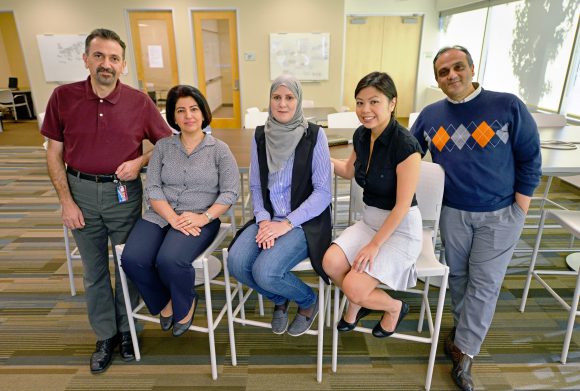
The contrast is stark: Despite trials of 244 promising experimental medications for Alzheimer’s from 2002 to 2012, only one – Namenda (memantine) – earned approval from the Food and Drug Administration. It joined a handful of even older medications that comprise our pharmaceutical arsenal against this sometimes fatal illness.
So far, no early treatment can stop or reverse the loss of neuron-to-neuron communication and brain-cell death that make Alzheimer’s so devastating. There is no cure, no medicine or vaccine to prevent it.
Yet, when five Chapman University School of Pharmacy graduate students, research assistants and professors recently published a major overview of drug development for the treatment and prevention of Alzheimer’s, they struck a cautiously optimistic tone. The report “Alzheimer’s Disease: Dawn of a New Era?” came out in July 2017 in the Journal of Pharmacy & Pharmaceutical Sciences. The consensus: Thanks to new discoveries about the origins of Alzheimer’s, significant new treatments may be closer than ever. “Brain changes begin a decade or more before symptoms appear, but most studies have involved people who already have symptomatic disease,” notes first author Farideh Amirrad (MP ’17). “There’s early evidence that in people at risk or with very early disease, some experimental molecules may actually be helpful.”
Drugs that emerged in the 1990s, such as Aricept (donepezil), Razadyne (galantamine), and Exelon (rivastigmine), may work for a few months or, in some people, a few years to improve cognitive function and slow brain deterioration. Called acetylcholinesterase inhibitors, these drugs work by increasing levels of the neurotransmitter acetylcholine in the brain, explains article co-author Viet-Huong Nguyen, PharmD, MPH, M.S., BCPS, an assistant professor of pharmacy practice at Chapman who specializes in neurology. Namenda works to support levels of another neurotransmitter, glutamate.
“These medications were breakthroughs at the time, when the prevailing view was that Alzheimer’s is caused by an imbalance of neurotransmitters,” Nguyen explains. “That does happen, but it’s a late-stage effect. Today we know that the primary causes of Alzheimer’s symptoms are the build-up of amyloid plaque between brain cells and the accumulation of tau tangles inside cells.” Inflammation may also play a role, and other types of dementia such as narrowed blood vessels of vascular dementia can make symptoms worse.
Many experimental drugs have targeted amyloid plaque and tau, but they haven’t made a significant difference in clinical trials with human subjects. The leading edge? “Treatment hasn’t been effective in moderate to severe Alzheimer’s, but researchers are focusing new clinical trials on people with early-stage disease and those at risk for Alzheimer’s,” Amirrad explains. “This has become possible because early brain changes can be detected with brain scans and with tests for early markers of Alzheimer’s in spinal fluid. So researchers can identify people who may be willing to participate in early-disease studies. This is an important new development.”
Among the most promising new experimental drugs are passive immunotherapy agents called monoclonal antibodies and secretase inhibitors that may clean up amyloid plaque; some may also reduce inflammation. A few, with names such as solanezumab, BAN2401 and MK-8931, are now in human trials for early-stage Alzheimer’s. “It’s taken us 20 years to home in on promising targets,” Nguyen says. “I think we could have effective treatments five or 10 years from now.”
NURTURING BRAIN HEALTH
After extensively combing the research for four years, Dr. Karen Unger (M.A. ’74) offers some advice on reducing the risk of Alzheimer’s and vascular dementia:
- Exercise every day. Activity can increase levels of a compound called BDNF– brain-derived neurotrophic factor – that promotes brain-cell growth.
- Say yes to good fats. Start with omega-3 fatty acids in walnuts, olive oil, fatty fish like salmon and fish-oil capsules, then add other nuts, avocados, organic dairy products and grass-fed meats. Good fats are a big component of cell membranes, while pro- cessed foods increase inflammation that can harm the myelin sheath, which coats nerve fibers and promotes signal transmission.
- Focus on fruits and veggies. They contain a wide range of phytochemicals that protect cells and cool inflammation. Wash them down with plenty of water – about 9 –11 cups a day. Water is a major component of brain cells, and it washes toxins from the body.
- Find time to relax, then sleep well at night. Stress hormones like cortisol can damage the brain. So can skimping on sleep. Recent studies show that the waste-eliminating glymphatic system is 10 times more active during sleep.
The Power of Prevention
Could the good things in life – helping others, staying active, relaxing and savoring Mediterranean-style meals (packed with good fats, fruit, vegetables and, if you like, a glass of wine) – save your brain? A convincing stack of research says that at least for some people, the answer is yes.
Late-onset Alzheimer’s – the most common type, which strikes after age 65 – is caused by a complex interaction of genes, lifestyle, advancing age, gender, race and ethnicity and even environmental exposures. That leaves part of the risk in your hands. “This is one of the biggest good-news stories to come out of studies on Alzheimer’s, dementia and brain health,” says Karen Unger, MSW, Ed.D. (M.A ’74). Unger is author of Brain Health for Life: Beyond Pills, Politics, and Popular Diets (Inkwater Press 2015). “We know now that the brain is plastic – at any age you can grow new neurons and new dendrites that send and receive signals. This can slow down the development of late-onset Alzheimer’s.”
Unger’s top-line advice for nurturing brain health includes exercising for 30 minutes or more each day; consuming good fats, fruit and vegetables; drinking plenty of water; and making sure to get plenty of rest. (See the accompanying collection of her brain-health tips.)
While you’re at it, add “give back to others” to your to-do list.
Health psychologist Tara Gruenewald, Ph.D., MPH, associate professor and chair of the Department of Psychology in Chapman’s Crean College of Health and Behavioral Sciences, is at the forefront of recent research finding that altruistic actions matter. Older adults who volunteered as elementary-school tutors through a nationwide program called the AARP Experience Corps saw modest increases in the hippocampus – a brain region crucial to memory formation. Meanwhile, non-volunteers saw their brains shrink.
In a 2016 study detailed in the Journal of Gerontology: Psychological Sciences, Gruenewald led a team from several major universities that found Experience Corps volunteers got a boost in “generativity” – the feeling that they made a meaningful difference in the lives of others. This sense of self can lead to better cognitive and mental health and a longer life, related research has shown.
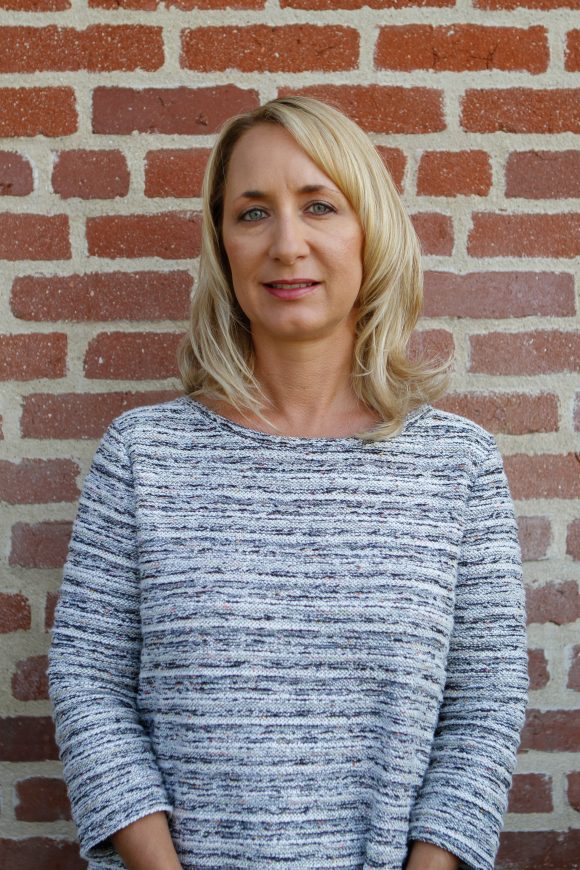
“The warm glow of helping others leads to greater social connectedness,” Gruenewald says. “We know from hundreds of studies that social connection improves health and cognitive function significantly. Volunteering also gets you up and out of the house, mentally engaged with the subjects you’re tutoring and with the students and changes our thoughts and feelings about ourselves in ways that seem to benefit the brain and the body. It’s all connected.”
Gruenewald is part of a team preparing to look at generativity and cognitive health in the Project Talent Aging Study. They’ll test 1,200 of the women and men who participated in the original Project Talent Study in the early 1960s. That study tracked 377,000 American teens for 11 years, looking at factors that determined their occupational and educational trajectories. Now, many have agreed to join this new look at their lives. “This is a unique and fascinating opportunity to look at factors affecting cognitive health across the life course,” Gruenewald says. “It’s very exciting.”
The Joys of Caregiving
Gincy Heins agrees emphatically with both the “old thinking” and an exciting new view of caregiving that’s emerging from research studies. Once viewed as a stressful task that could threaten the emotional and physical health of caregivers, recent research underscores something that those caring for a loved one with Alzheimer’s and other forms of dementia have long known: It can also bring happiness and a deep sense of meaning.
“You do have to find ways to take care of yourself,” she says. “It’s so valuable to be able to carve out even a few minutes to do something that really matters to you – something creative or relaxing or social that helps you recharge. Caregiving can also bring great joy.”
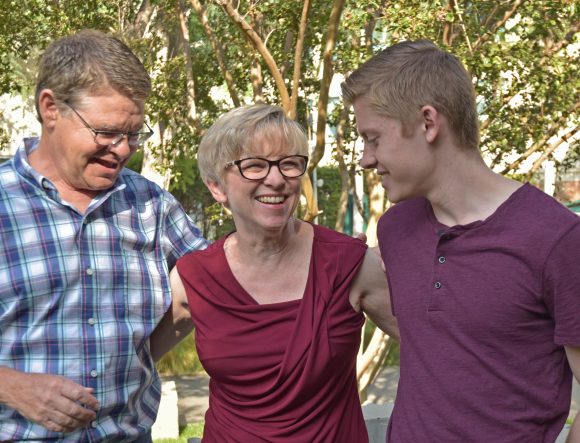
Heins stepped in to help care for her husband, Steve, after his MCI diagnosis. “Steve is very independent, I found I had to take over more of the jobs around the house in addition to going to work part-time,” she says. One approach that helps: Being proactive. “You’re taking action instead of reacting to a problem,” she says. That could mean installing grab bars in the bathroom before someone falls, or staying ahead with prescription refills so you don’t run out on a Sunday night.
Services, devices and appliances that make it easier are a brilliant way to be even more proactive, she adds. “I found an alarm device where I could record messages for Steve, to help him remember when he had to get ready for an appointment, for instance,” Heins says.
Caregiving can be a lonely job, she acknowledges. “Support groups can be very comforting,” she says. “I try to go to one every month. The way I see it, we’re all in our own little boats, but we’re in the same ocean when it comes to caring for a loved one with MCI or dementia. It’s so good to know you’re not alone.”
Clues to Alzheimer’s in the Bolivian Amazon?
By Dennis Arp

An isolated population living a subsistence lifestyle in the Bolivian Amazon has already provided insights about preventing heart disease. Now researchers are hoping the indigenous group can do the same for Alzheimer’s.
A $3.7 million grant from the National Institutes of Health is funding a study of brain atrophy, cognitive impairment and Alzheimer’s disease among the Tsimane, hunter-gatherers who have the world’s lowest reported levels of vascular aging.
“The link between arterial health and Alzheimer’s is still unclear,” says Hillard Kaplan, Ph.D., co-director of the Tsimane Project and a visiting professor of anthropology at Chapman University. “This is the first study of a population that looks at the rate of tissue loss in the brain.”
Research by Kaplan and others on the Tsimane Project team shows that a typical 80-year-old in the group has the same vascular age as an American in his or her mid-50s. The Tsimane also have few cases of diabetes and hypertension, to go with a near absence of stroke and heart attack.
Villagers spend as much as seven hours a day being physically active – hunting, gathering, fishing and farming. Their diet consists largely of non-processed carbohydrates that are high in fiber, while wild game and fish provide the bulk of their protein. There’s almost no smoking.

If the industrialized world emulated the Tsimane in diet and activity, it would save millions of lives and billions of dollars in healthcare costs, Kaplan says.
“We are our own worst enemies,” he notes.
Now the question is: Does the Tsimane lifestyle “create a flexible brain that ages effectively?” Kaplan adds. “Our study will provide a deeper understanding of how genetics and behaviors interact.”
In October, the professor traveled from Chapman to resume field research in the jungles of Bolivia. Time is of the essence as the developed world closes in on the Tsimane.
“We’re watching their lifestyles change right before our eyes,” Kaplan says. “This may be our last chance to study the natural history of Alzheimer’s in a population that still has a lifestyle similar to that of prehistoric populations.”
‘Alzheimer’s: A Love Story’
By Dennis Arp
Monica Petruzzelli ’16 has a favorite moment in Alzheimer’s: A Love Story, the award-winning documentary she produced and directed with three Chapman University student colleagues.
Gregory Maire is struggling with dementia when his husband of 41 years, Michael Horvich, places headphones over his ears, allowing Maire to hear classical piano played the way he did himself as a younger man. Maire brightens and listens intently. Tears glisten in his eyes.
“I’m so young, it’s hard to comprehend that people could have a love story endure for so long, especially through such hardships and challenges,” says Petruzzelli, a broadcast journalism graduate who now works as a reporter and anchor at KIEM News Channel 3 in Eureka, Calif. “It was inspiring to witness that love firsthand.”
Petruzzelli made the film with Amanda Le ’15, Gabe Schimmel ’17 and Riani Singgih ’18 as part of Dodge College’s Community Voices project, which links student filmmakers with local community groups – in this case the Alzheimer’s Association. The project is funded by the Dhont Family Foundation, and students are mentored by documentary film professor Sally Rubin.
“From the beginning, the kids did a wonderful job of storytelling,” says Horvich, who during the film shares his life as husband and caregiver to Maire at a time of difficult transitions necessitated by the disease. “The documentary experience gave me an even stronger sense of how powerful our bond of love was.”
Audiences respond to the film’s messaging “that a diagnosis of Alzheimer’s doesn’t have to be a death sentence, and that love is love,” says Horvich, who often speaks before and after screenings.
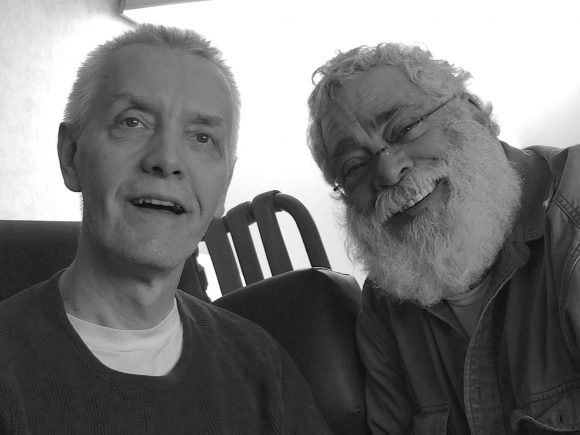
Alzheimer’s: A Love Story has been shown at more than 80 festivals, winning 30-plus awards, including two at the Cannes American Pavilion Emerging Filmmakers Showcase. The documentary is available for viewing on Amazon Prime, Vimeo on Demand and at shortoftheweek.com.
For co-director Schimmel, perhaps the most poignant moment didn’t make the film.
“All four of us on the team were in a circle, saying goodbye to Gregory, and he was having a hard time understanding,” Schimmel says. “Then suddenly Gregory looked up and said simply, ‘Thank you.’ It was so genuine and sweet. We all cried.”
This story appeared in the fall 2017 issue of Chapman Magazine.
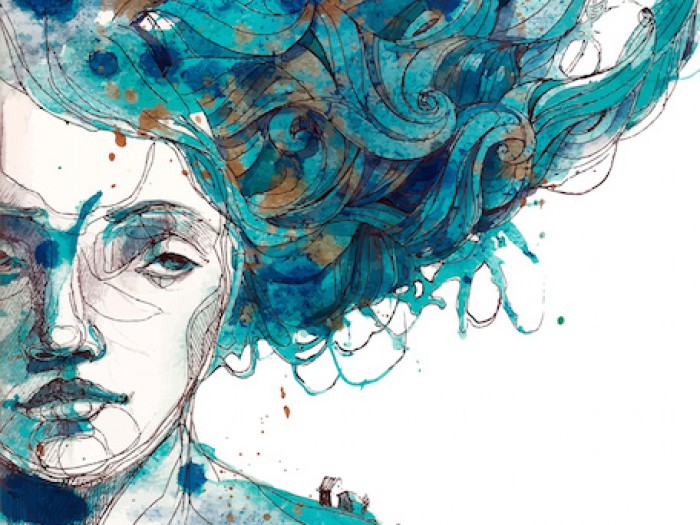
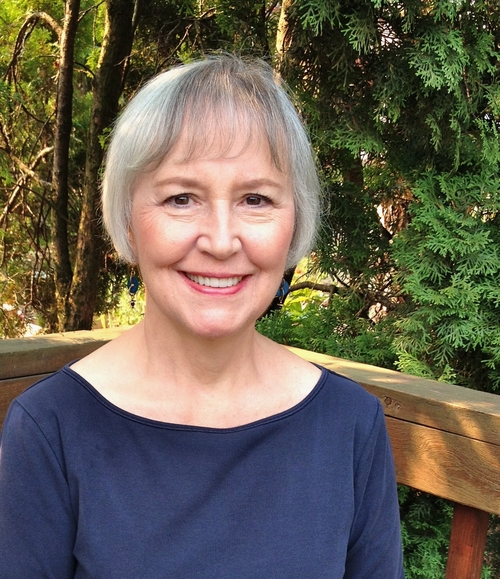
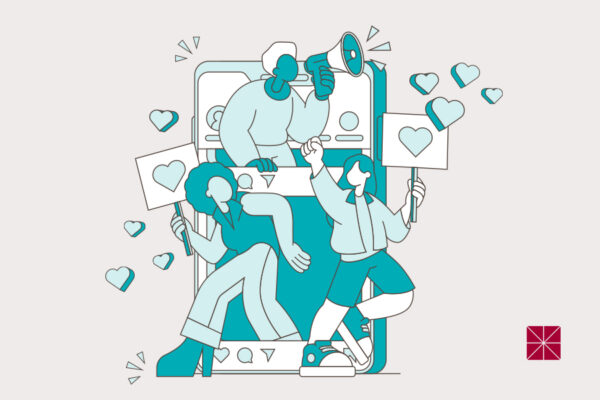
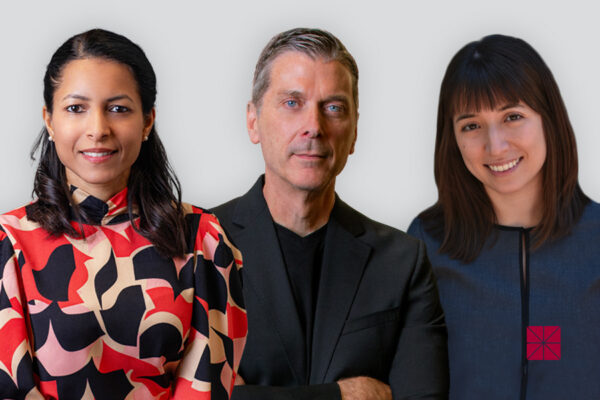


Add comment